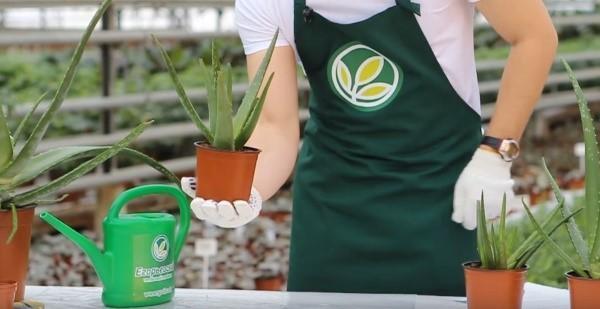We care for aloe correctly
 Aloe can rightfully be considered one of the most "ancient" indoor plants, because its cultivation history began a long time ago. Our grandmothers and great-grandmothers kept an agave at home back in the days when pharmacies were not on every corner, and it was problematic to get medicines. This home doctor more than once saved children from colds and runny nose, and adults from more serious diseases.
Aloe can rightfully be considered one of the most "ancient" indoor plants, because its cultivation history began a long time ago. Our grandmothers and great-grandmothers kept an agave at home back in the days when pharmacies were not on every corner, and it was problematic to get medicines. This home doctor more than once saved children from colds and runny nose, and adults from more serious diseases.
The plant has not lost its popularity even now and is widely used in indoor floriculture. Some growers continue to enjoy its medicinal properties, while others simply grow the flower for pleasure and beauty, especially its decorative varieties obtained as a result of the work of breeders.
In general, all varieties aloe have general requirements for care that allow the flower to actively develop, growing juicy fleshy leaves, and even bloom. Let's talk about them today.
There have been disputes about the belonging of aloe to a certain family of plants for a long time. Most scientists are sure that aloe belongs to the asphodelic family, others consider it to be xentorrhea representatives, and some argue that aloe belongs to the lily family.
What kind of soil does the flower like?
Aloe, like cacti, is very fond of mechanical inclusions in the ground in the form of broken bricks and similar components. They protect a fleshy plant with a small root system from moisture stagnation, which is destructive for them. However, unlike thorny succulents, it needs more nutritious soil.
You can prepare it by mixing:
- 2 pieces of garden soil or cactus store substrate;
- 2 pieces of sand;
- 0.5 parts of humus;
- some broken bricks;
- some charcoal.
Lighting and temperature
In order for aloe to actively grow new leaves, filling them with healing juice, it just needs good lighting. As an African plant, the flower will not be able to live in the shade and will grow frail, or even die altogether.
Watering features
Despite the fact that the flower has juicy leaves, in the summer, abundant watering is very important for it. After the flower has been watered, excess water from the pan should not be drained immediately, but after a few hours, when the soil is well saturated.
In winter, the frequency of watering depends on the temperature in the room:
- if the room is hot, the summer mode continues;
- in a cool room, water aloe less often, otherwise it will rot.
Aloe is better to underfill than overflow.
Transfer frequency
Young aloes should be replanted annually in the spring. It is enough to transfer adult specimens into a larger pot every two years, combining this process with the reproduction of the flower and separating the children from it.
Can I use aloe vera juice from the pharmacy for the medicine?
Aloe juice from the pharmacy has already passed heat treatment and has a slightly changed composition. You can use it, but the effect will be much lower. In folk medicine, fresh juice from three-year-old aloe is used, which is not watered before cutting for at least 3 days. The prepared product is stored in the refrigerator.
many thanks